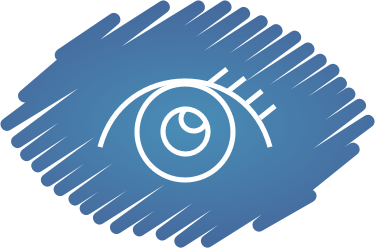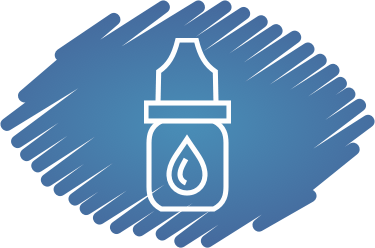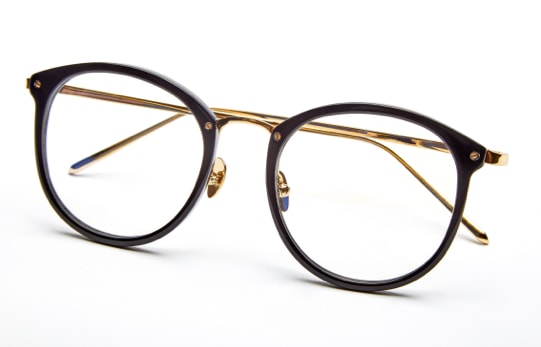Dry eye is a common condition that many people experience because of the digital age we live in. But what if you also have headaches? Are those nagging headaches and dry, irritated eyes connected?
While dry eyes don’t directly cause headaches, the two can sometimes go hand in hand due to shared triggers. A comprehensive eye exam can help determine the root cause of your dry eyes for tailored treatment options for dry eye symptom relief and possibly fewer headaches.
What Is Dry Eye?
Dry eye or dry eye disease happens when your eyes don’t get enough moisture, either because your tear production is too low or your tears evaporate too quickly. This can lead to discomfort and difficulty with tasks like reading or screen time. Common dry eye symptoms include:
- Burning, gritty, or scratchy sensation
- Redness
- Eye pain
- Blurry vision
- Light sensitivity
- Watery eyes
- Sore eyes
- Irritation
Dry Eye Causes
Tears contain 3 layers: water, oil, and mucous. These layers lubricate the eyes, protect the eyes, and help provide a smooth eye surface. However, insufficient tears and poor-quality tears can lead to dry eyes.
A variety of factors can impact your tear quality and production, including:
- Environment: Air conditioning, heating, smokey environments, or windy weather can dry out your eyes.
- Digital eye strain: Staring at a screen reduces your blinking rate, leading to dryness.
- Aging: Tear production tends to decrease as we age.
- Health conditions: Autoimmune diseases, diabetes, or thyroid problems can cause dry eye.
- Medications: Antihistamines, decongestants, and antidepressants can contribute to dry eyes.
- Eye problems: Inflammation or infection of the eyelid can affect tear quality and lead to dry eyes.
- Laser eye surgery: Can affect the natural tear film and lead to eye dryness.
The Link Between Dry Eyes & Headaches
Though dry eyes and headaches are separate issues, certain factors tie them together. These can include:
- Eye strain: When your eyes are dry and strained, they work harder to focus, potentially triggering tension headaches.
- Light sensitivity: Dry eyes can make you more sensitive to bright light, leading to or worsening headaches, especially in people who suffer from migraines.
- Cluster headaches: These intense headaches often cause sharp pain on one side of the head or near one eye, which is mistaken for eye-related discomfort.
- Underlying conditions: Autoimmune disorders like Sjögren’s syndrome can lead to dry eyes and headaches.
- Medications: Certain medications can cause dry eyes and headaches as side effects.
Diagnosing Dry Eye & Headaches
Diagnosing dry eyes and headaches involves understanding your symptoms, lifestyle, and overall health. Your eye doctor can perform specialized tests to evaluate your tear quality and production, identifying the root cause of dry eye symptoms.
To diagnose headaches, a healthcare provider may review your medical history, triggers, and frequency to pinpoint the type and underlying cause. Since these conditions can share triggers like eye strain or light sensitivity, addressing both with a comprehensive approach can provide effective relief and better overall comfort.
Tips to Prevent Dry Eyes & Headaches

A little effort can go a long way in reducing dry eye symptoms and headaches. Here are some helpful strategies.
Consider the following tips to prevent dry eye:
- Take frequent breaks from screens: Follow the 20-20-20 rule—every 20 minutes, look at something 20 feet away for 20 seconds to rest your eyes.
- Use a humidifier: Add moisture to the air to keep your eyes hydrated.
- Blink more often: Frequent blinking, especially during screen time, can keep your eyes lubricated.
- Wear protective eyewear: Wraparound sunglasses can shield your eyes from wind, dust, and sun.
Consider the following tips to prevent headaches:
- Stay hydrated: Dehydration is a common headache trigger, so drink plenty of water.
- Stretch and move: Regular exercise and stretching can ease tension that may contribute to headaches.
- Adequate sleep: Fatigue can worsen headaches and dry eyes, so aim for at least 7 hours of quality sleep per night.
- Talk to a doctor: If headaches persist, a healthcare provider can recommend treatment tailored to your needs.
Dry Eyes and Headache Treatment Options
If at-home remedies aren’t enough, don’t hesitate to seek professional care. Your eye doctor can pinpoint the cause of your symptoms and recommend effective treatments.
Treatment for dry eyes can include:
- Artificial tears: Over-the-counter preservative-free eye drops provide mild dry eye symptom relief.
- Prescription medications: These eye drops can improve tear quality.
- Eye masks: Hot and cold therapy eye masks can relieve swelling and headache and sinus pressure.
- Lid care: Lid wipes can remove dirt and residue and prevent infection.
- Debridement and expression: Gentle expression of the oil glands in the eyelid can improve tear quality and reduce dry eye symptoms.
Treatment for headaches can include:
- Pain relief: Over-the-counter or prescription medication can ease headache discomfort.
- Preventative measures: Your doctor may suggest preventative treatments or therapies for frequent migraines.
Symptom Relief for Healthy Eyes & Vision
While dry eyes and headaches might not be directly related, managing one can often help ease the other.
Book an appointment with Flamborough Family Eyecare for persistent vision symptoms to determine the cause and a personalized treatment plan for healthy eyes and vision.


















